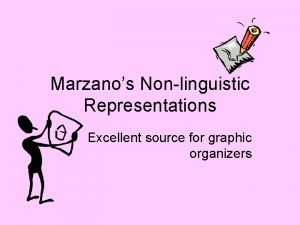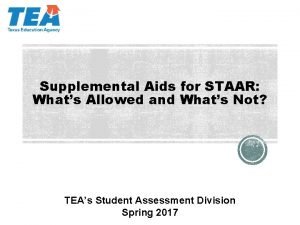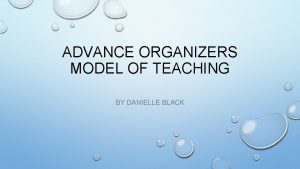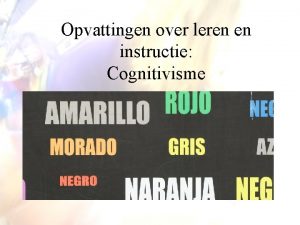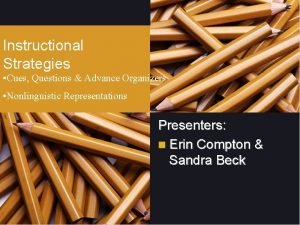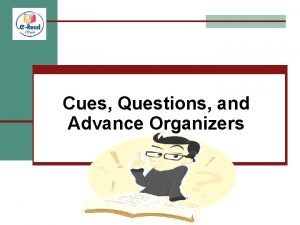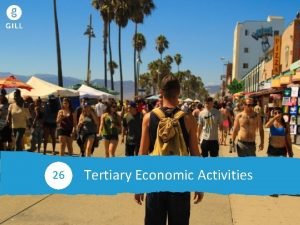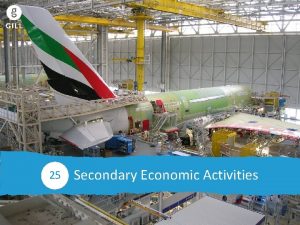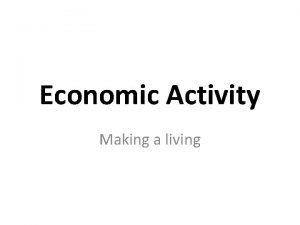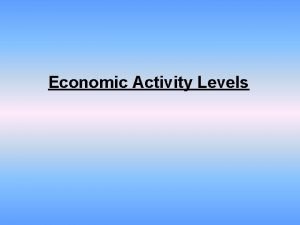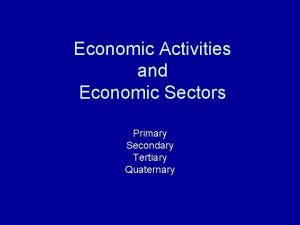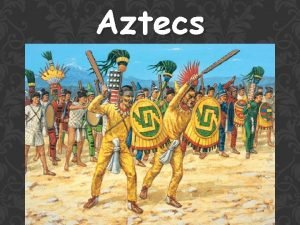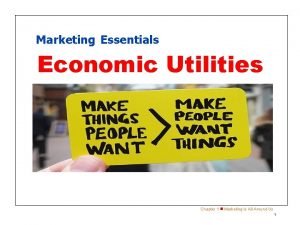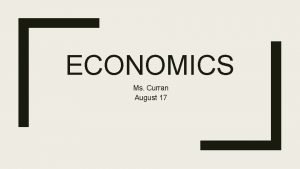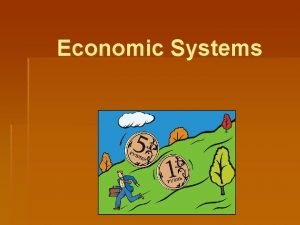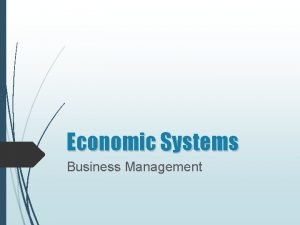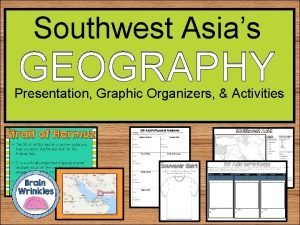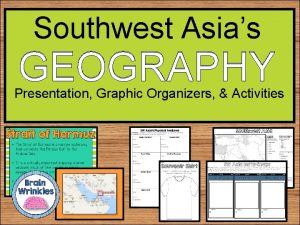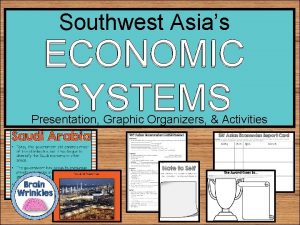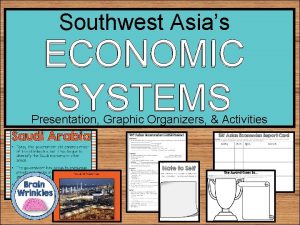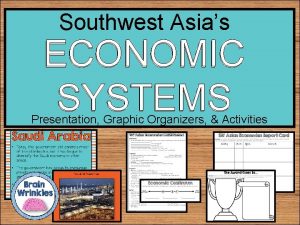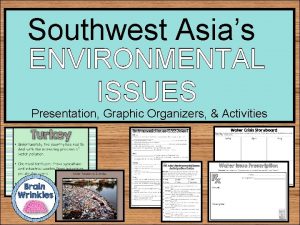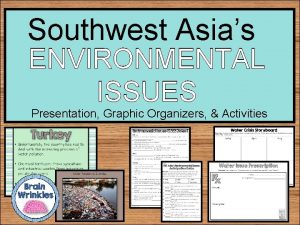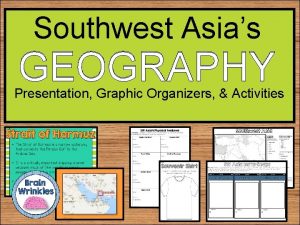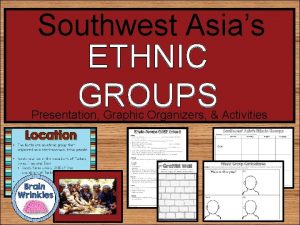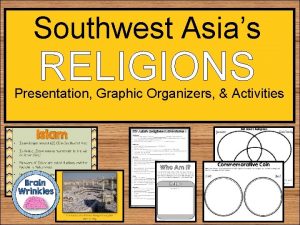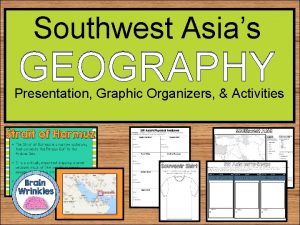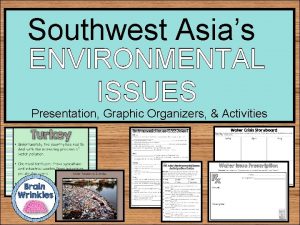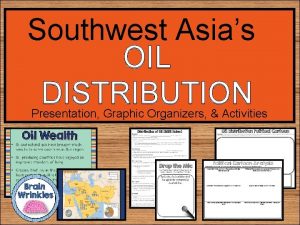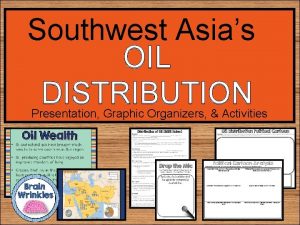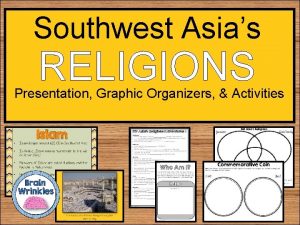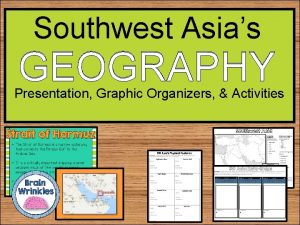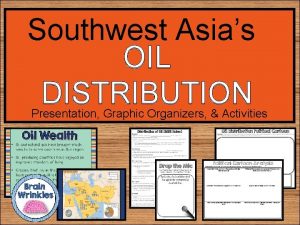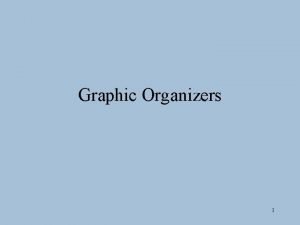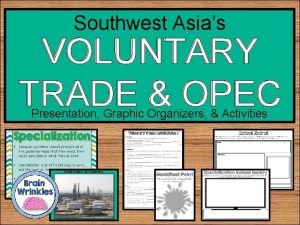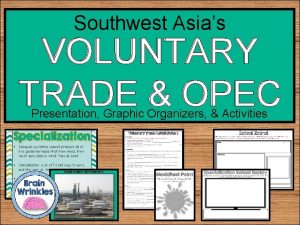Southwest Asias ECONOMIC SYSTEMS Presentation Graphic Organizers Activities











































- Slides: 43

Southwest Asia’s ECONOMIC SYSTEMS Presentation, Graphic Organizers, & Activities

STANDARDS: SS 7 E 4 Analyze different economic systems. a. Compare how traditional, command, and market economies answer the economic questions of 1 -what to produce, 2 -how to produce, and 3 -for whom to produce. b. Explain that countries have a mixed economic system located on a continuum between pure market and pure command. c. Compare and contrast the economic systems in Israel, Saudi Arabia, and Turkey. © Brain Wrinkles

TEACHER INFO: CLOZE Notes • The next pages are handouts for the students to use for note-taking during the presentation. (Print front to back to save paper and ink. ) • Check the answers as a class after the presentation. © Brain Wrinkles

Southwest Asia’s Economic Systems Israel, Saudi Arabia, & Turkey © Brain Wrinkles

Let’s Review • Do you remember the three questions that every country must answer when developing its economic plan? 1. What goods/services will be produced? 2. How will goods/services be produced? 3. Who will consume the goods/services? • The way a country answers these questions determines what kind of economic system it will have: Traditional Command Market

Traditional • All economic decisions are based on customs, traditions, & beliefs of the past. • People will make what they always made and do the same things their parents did. • The exchange of goods is done through bartering. • Bartering = trading without using money • Some examples: villages in Africa & Asia, the Inuit in Canada, Aborigines in Australia

Afghan Village Traditional Economy

Command • All economic decisions are made by the Government. • The government owns most of the property, sets the prices of goods, determines the wages of workers, plans what will be made…everything. • This system has not been very successful. More and more countries are abandoning it.

Command • This system is very harsh to live under; because of this, there are no PURE command countries in the world today. • Some countries are close: Cuba, former Soviet Union, North Korea, former East Germany, etc. • All of these countries have the same type of government: Communist! The government is in control of everything.

North Korea’s Command Economy

Market • Economic decisions are made based on the changes in prices that occur as buyers & sellers interact in the market place. • The government has no control over the economy; private citizens answer all economic questions. • In a truly free market economy, the government would not be involved at all. Scary… • There would be no laws to make sure goods/services were safe. *Food! Medicine! • There would be no laws to protect workers from unfair bosses. • Because of this, there are no PURE market economies, but some countries are closer than others.

2016 Index of Economic Freedom

Hmmm… • Since there are no countries that are purely command or purely market, what does that make them? • Most democratic countries have some characteristics of both systems, so we keep it simple and call them: MIXED. • Of course, most countries’ economies are closer to one type of system than another.

ISRAEL © Brain Wrinkles

Israel • Israel has a mixed economic system. • According to the Index of Economic Freedom, Israel is 70% free and 30% command. • Private businesses in technology, agriculture, and tourism, determine their own production of goods and services. • Prices are based on supply and demand.

Israel • While private enterprise plays a role in Israel’s economy, the government also has a hand in the country’s economic planning. • The government controls the electric, natural gas, and aerospace industries, and most of the land is governmentowned. • It charges various taxes and controls prices on agricultural goods and banking services.


Israel • Israel has the most diversified economy in Southwest Asia. • Its important industries include: mining, cutting and polishing diamonds, agriculture, & manufacturing tech equipment. • Also, a high percentage of Israelis work in the service industry, as Israel is a popular tourist destination.

Israel’s Tourist Destinations: Tel Aviv Jerusalem

Israel 1. What to Produce? Individuals and corporations; government has some regulations 2. How to Produce? Individuals and corporations; government has some regulations 3. For Whom to Produce? Individuals and corporations; government has some regulations

Challenges • Since its creation in 1948, Israel has been involved in much conflict with its neighbors. • Building up its national security and maintaining its armed forces has put a strain on Israel’s economy. • Another financial burden has been large volumes of immigrants, even though they have brought valuable skills to the country.


SAUDI ARABIA © Brain Wrinkles

Past • In 1932, when Saudi Arabia became a nation, its economy was mostly traditional and consisted of trading camels, goats, & textiles. • When oil was discovered, the Saudi royal family transformed the economy into mostly command profited greatly from oil wealth.


Present • Today, the government still controls most of the oil industry, but it has begun to diversify the Saudi economy in other areas. • The government has begun to encourage private enterprise in areas like power generation and natural gas exploration. • With a large part of revenue now coming from private businesses, Saudi Arabia now has a mixed economy that rates as 64% free and 36% command.

Saudi Arabia • The government is trying to grow the private sector in order to diversify the economy. • Private businesses are being asked to take on a greater role in education, healthcare, and tourism. • The Saudi government has even started selling shares of the country’s petroleum company to the public.

Saudi Aramco is the state-run company that owns, operates, and develops all of the oil and natural gas reserves in the country.

Saudi Arabia • Despite the recent changes, the Saudi government is still very involved in the country’s economy. • It lets private companies make few decisions about production and prices.

Saudi Arabia 1. What to Produce? Individuals and corporations; government has many restrictions on the oil industry 2. How to Produce? Individuals and corporations; government has many restrictions on the oil industry 3. For Whom to Produce? Individuals and corporations; government has many restrictions on the oil industry

Challenges • Income from oil accounts for 75% of the country’s budget; however, oil supplies don’t last forever. • Saudi Arabia’s unemployment rate is high. • One-third of Saudi Arabia’s jobs are filled by people from other countries because the country has a shortage of skilled native labor.


TURKEY © Brain Wrinkles

Past • When Turkey became a country in 1923, its ruler Mustafa Kemal set up a command economy. • Kemal believed the government should control & build the economy, so he invested in the country’s infrastructure: dams, electricity, ports, railroads, and roads. • The government also developed important steel and weapon industries.

Mustafa Kemal Ataturk

Present • Reforms in Turkey since the 1980 s have moved it to a mixed economy. • Today, Turkey is by far the largest economy in the Middle East, and it rates as 65% free and 35% command. • The Turkish government has aggressively privatized state-owned industries in recent years and private enterprise is growing in agriculture, electronics, textiles, automotive, and petrochemicals. • Private companies are able to decide how much to produce and to set prices based on supply & demand. • Much of Turkey’s land, businesses, and factories are

Private enterprise is growing in the agricultural industry.

Turkey • The state still has an active role in Turkey’s economy; it plays a major part in industry, communication, banking, and transportation. • It charges taxes on businesses and some of its regulations are difficult to comply with, which has led to an increase in government corruption. • The government sets price controls on electricity and some food items.

Turkey 1. What to Produce? Individuals and corporations; government has some regulations on industry, banking, transportation, & communications 2. How to Produce? Individuals and corporations; government has some regulations on industry, banking, transportation, & communications 3. For Whom to Produce? Individuals and corporations; government has some regulations on industry, banking,

Challenges • Turkey lies partly in Europe and partly in Asia. • Because most of Turkey’s trade is with Western Europe, so it has been trying for years to join the European Union. • Unfortunately, Turkey is considered a developing nation and remains poor when compared to most European countries.


Thank You! Thank you so much for downloading this file. I sincerely hope you find it helpful and that your students learn a lot from it! I look forward to reading your feedback in my store. If you like this file, you might want to check out some of my other products that teach social studies topics in creative, engaging, and hands-on ways. Best wishes, Ansley at Brain Wrinkles

Terms of Use © Brain Wrinkles. Your download includes a limited use license from Brain Wrinkles. The purchaser may use the resource for personal classroom use only. The license is not transferable to another person. Other teachers should purchase their own license through my store. This resource is not to be used: • By an entire grade level, school, or district without purchasing the proper number of licenses. For school/district licenses at a discount, please contact me. • As part of a product listed for sale or free by another individual. • On shared databases. • Online in any way other than on password-protected website for student use only. © Copyright Brain Wrinkles. All rights reserved. Permission is granted to copy pages specifically designed for student or teacher use by the original purchaser or licensee. The reproduction of any other part of this product is strictly prohibited. Copying any part of this product and placing it on the Internet in any form (even a personal/classroom website) is strictly forbidden. Doing so makes it possible for an Internet search to make the document available on the Internet, free of charge, and is a violation of the Digital Millennium Copyright Act (DMCA). Thank you, Ansley at Brain Wrinkles Clipart, fonts, & digital papers for this product were purchased from:
 Yellow sea and east china sea
Yellow sea and east china sea Tea supplemental aids
Tea supplemental aids Staar blank place value chart
Staar blank place value chart Supplemental aids examples
Supplemental aids examples 4 square graphic organizer
4 square graphic organizer Human read aloud mcas
Human read aloud mcas Non linguistic examples
Non linguistic examples Blank graphic organizers for staar
Blank graphic organizers for staar Marzanos strategies
Marzanos strategies Mcas accommodations
Mcas accommodations Chapter 1 lesson 2 our economic choices worksheet answers
Chapter 1 lesson 2 our economic choices worksheet answers Bleed graphic novel definition
Bleed graphic novel definition Ghost graphic story graphic and wayfinding
Ghost graphic story graphic and wayfinding Expository advance organizer
Expository advance organizer Advance organizer model example
Advance organizer model example Expository advance organizers examples
Expository advance organizers examples Dear organizers
Dear organizers Discourse organizing words
Discourse organizing words Marzanos 9
Marzanos 9 Cues questions and advance organizers
Cues questions and advance organizers Problem solving videos
Problem solving videos Economic system graphic organizer
Economic system graphic organizer Operating activities vs investing activities
Operating activities vs investing activities Now group these activities into indoor and outdoor
Now group these activities into indoor and outdoor Primary and support activities
Primary and support activities Primary activities definition
Primary activities definition Secondary economic activities in the west of ireland
Secondary economic activities in the west of ireland Tertiary
Tertiary Tertiary economic activities in the paris basin
Tertiary economic activities in the paris basin Secondary economic activities
Secondary economic activities Economic activities
Economic activities 4 levels of economic activity examples
4 levels of economic activity examples Secondary economic sector
Secondary economic sector Ancient aztec government
Ancient aztec government Economic activities by men and women
Economic activities by men and women Form utility marketing
Form utility marketing Economics
Economics Economic growth vs economic development
Economic growth vs economic development Economic growth and development
Economic growth and development Presentation about leisure time
Presentation about leisure time Education health and famine comprehension check
Education health and famine comprehension check What is the purpose of an economic system
What is the purpose of an economic system Economic systems examples
Economic systems examples How many economic systems are there
How many economic systems are there






